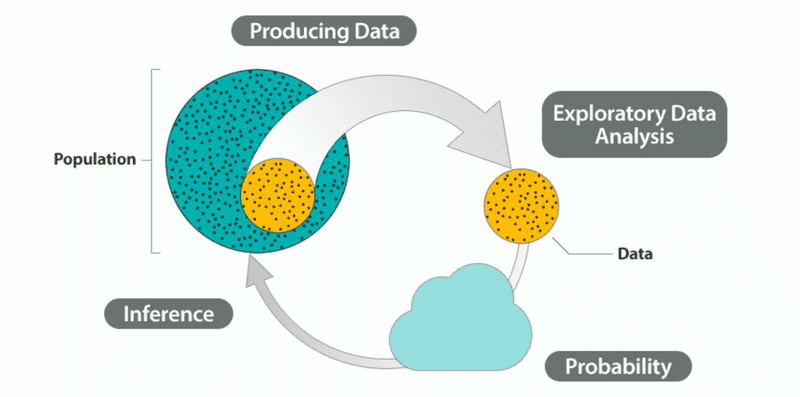A Review of the Stanford OLI Probability and Statistics Course
2016-08-30I've just finished the material of the Probability and Statistics Course offered on Lagunita which is Stanford's Open Learning Initiative platform.
The course is an introduction to the fundamental concepts in statistics, and offers a holistic treatment of the "Big Picture" of Statistics, the ultimate aim of which is to make conclusions about a population based on data collected from a sample.
The course is mostly textual, with plenty of supporting diagrams and a few videos explaining crucial concepts. Multiple choice quizzes are presented after and during the learning of each concept, to strengthen understanding of the same.
Separate sections are dedicated to each of the stages described in the above figure and concepts are covered in an organized and wholesome manner, giving one the basic concept without inundating a new learner with superfluous detail.
Topics
Producing Data
Sampling and Study Design are introduced along with a few common methods for each of them. The emphasis is on producing a sample which is representative of the entire population, as this is a basic requirement for later inference. The types of study designs are explored as well: Observational (including surveys) and Experimental.
Exploratory Data Analysis
EDA for single and two variable situations are explored and the correct visualization technique and numerical summary for each of them is presented.
Probability
This section is introduced through the famous Monty Hall problem, which is used to show how probability is not always intuitive. The section covers the laws of probability, random variables and the probability distributions for common continuous and discrete random variables.
Inference
The three types of inferences are presented: Point Estimation, Interval Estimation and Hypothesis Testing and each of these are explained with the help of numerous examples. Hypothesis Testing for both a single variable and the relationship between two variables is covered.
Coverage
The content, with the exception of a few typographical errors, is of high quality. The topics above are covered in considerable detail, although the mathematically inclined maybe a little disappointed as some of the results are presented intuitively and without formal explanation.
Time Commitment
It took me almost a month to finish this course alongside my day job. It takes a little motivation to get through it as a lot of the course is textual.
Overall, I think this course is great for anyone interested in learning the basics of statistics. More advanced concepts of Linear and Logistic Regression are covered in another course on Lagunita - Statistical Learning.
